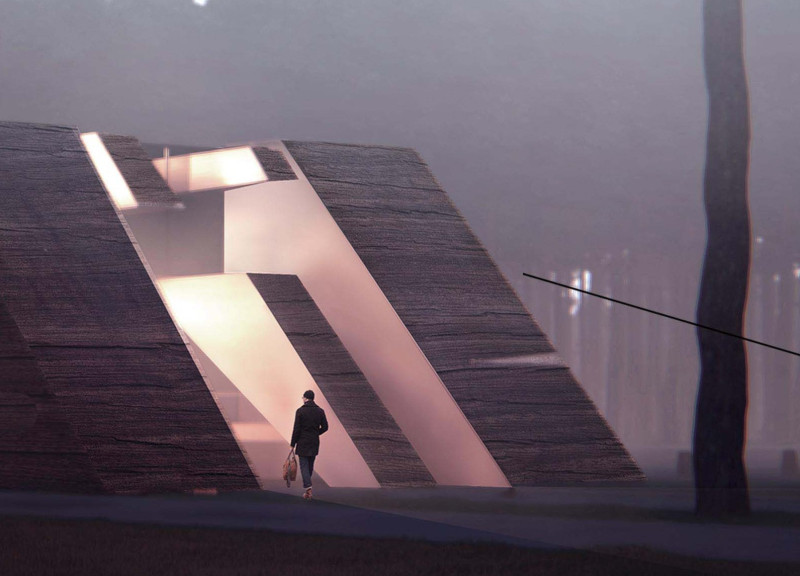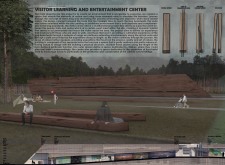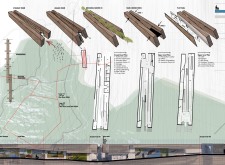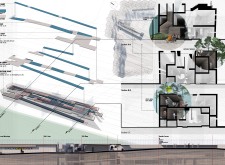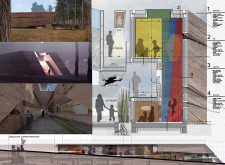5 key facts about this project
The Visitor Learning and Entertainment Center is situated in a natural landscape and designed to encourage education and interaction with the environment. It functions as a hub for visitors, offering a space where nature and learning come together. The design focuses on making the space accessible to everyone so that all visitors can explore and benefit from the educational opportunities it provides.
Design Approach
The overall concept emphasizes the integration of nature into the visitor experience. A pathway follows the route that travelers would typically take to reach the bog boardwalk. This route is extended and enhanced throughout the site, prompting visitors to engage with the environment. The layout not only guides people as they explore but also deepens their connection to nature through immersive experiences.
Functional Layout
The center includes a variety of functional spaces that facilitate different activities and educational opportunities. It serves as a junction for the nearby trails. Important areas include a reception lobby, ticket counter, and introductory information space. These features allow for easy visitor access and orientation within the center and set the stage for the educational journey.
Accessibility Features
Accessibility is a key consideration in the design. A network of ramps and platforms is built into the structure, allowing easy movement for everyone, including those with mobility challenges. This thoughtful approach ensures that people can fully engage with the exhibits and enjoy the bog boardwalk. Along the pathways, various educational installations provide insights into local plants and animals, enriching the experience as visitors navigate the space.
Spatial Composition
The building consists of two distinct sections that create a relationship between indoor and outdoor areas. This arrangement encourages a connection with the natural environment. The design uses linear planes to define different functional spaces, including children's play areas and exhibition spaces for local artists. This arrangement enhances the overall activity and learning opportunities available within the center.
An outdoor terrace provides expansive views of the surrounding landscape, allowing visitors to contemplate their relationship with nature. This design choice invites reflection while maintaining interaction within the built environment.


